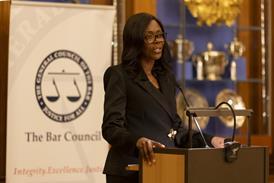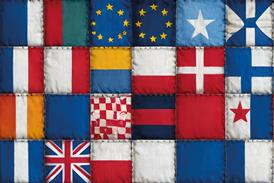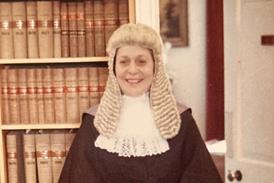A skilled communicator will be vital to the way the Supreme Court is perceived
The UK’s new Supreme Court will adopt a refreshingly open approach to the outside world when it takes over from the law lords in little more than a year from now.
Visitors who brave the new court’s forbidding exterior on Parliament Square will be rewarded with somewhere to sit down and have a cup of tea – inspiring the recent Daily Telegraph headline ‘A Supreme Court, with quite a nice café’. And the judges are planning to appoint a head of communications, libraries and education – a senior official responsible for helping the public understand our new final court of appeal and the work it will do.
But many of the detailed public relations issues have yet to be decided. Not unreasonably, the law lords have devoted their energies over the past couple of years to choices that need to be made in good time: for example, furniture, carpets, wall-coverings and designs for the seal that will serve as the court’s logo.
The first Justices of the Supreme Court – as the serving law lords will become in October 2009 – are open-minded about installing television cameras in their two courtrooms. It is not widely known that the law lords allowed one of their hearings to be video-recorded in 2006. That was when they sat as the Judicial Committee of the Privy Council to hear appeals by six men convicted of sexual offences in the remote island of Pitcairn; the recordings were later shipped out, to be seen only by the islanders.
But who should be allowed access to the Supreme Court’s television feed? The judges are realistic enough to know that their hearings will not be shown live very often. But that should not deter the court from making its proceedings available to all who may be interested in them.
There are plans to show live hearings on screens in the public exhibition area. Television monitors should also be installed in the press room. But there is a much more effective way of communication that the judges have not yet adopted – and that, of course, is the internet.
It should not be very difficult to stream a live video feed of the proceedings on the court’s new website, together with an archive of recent cases. The European Court of Human Rights already makes recordings of its hearings available in this way, saving the cost of a trip to Strasbourg.
Naturally, the website will carry information about how the court works, along with a diary of forthcoming hearings and copies of all its judgments. It should also contain the parties’ written arguments. These are filed in advance and are essential to a proper understanding of the hearing.
For the benefit of non-lawyers, the website should provide details of the decision under appeal, an explanation of the grounds on which permission to appeal has been granted and some indication of why the case is being heard by the highest court in the land.
It is even more important for the Supreme Court to issue press releases summarising its judgments. The judges have not yet decided whether they will aim for a single ruling in each case, in place of the current individual ‘opinions’ – as their judgments are called. Either way, though, non-specialist reporters may not find it easy to work out who has won and how significant the victory might be.
It is not unknown for campaign groups to exploit this ignorance by ‘spinning’ the result. That risk could be reduced if the Supreme Court explained its decisions in simple terms.
There may be some initial resistance to this idea. Judges might fear that a judicial press release, itself necessarily selective, will be regarded by other courts as decisive. But it will be no more authoritative than any other court report – as a disclaimer should explain.
Judicial press releases are by no means unprecedented. Judges in the High Court and the Court of Appeal sometimes provide summaries of their rulings – though these may be misleading. Press releases are routinely issued by the European Court of Human Rights, the European Court of Justice and the various international courts. The law lords themselves broadcast their own summaries of their rulings in the three Pinochet appeals of 1998/99.
So it should not be too difficult to persuade the new judges that they need to issue written summaries. What they may find rather harder to accept is that their head of communications should give interviews on their behalf.
It is well understood that individual judges must not talk publicly about their decided cases. That rule, though not always observed, should continue. All the more reason, then, why the new head of communications should explain the Supreme Court’s decisions.
This could be done by means of informal press briefings and, where appropriate, through appearances on radio and television.So far, no outsider has been authorised to speak for our judges. The Judicial Communications Office – which operates below the level of the law lords – acts merely as a conduit for the judges’ own speeches and decisions.
So the Supreme Court justices must grasp the opportunity and authorise their head of communications to be the public face of the new court.
Unless the court appoints someone skilled at explaining judicial rulings, there may be misunderstanding and unjustified criticism of its decisions. A far more proactive approach is needed than the law lords currently envisage if the UK Supreme Court is to command the confidence of the country.



























No comments yet